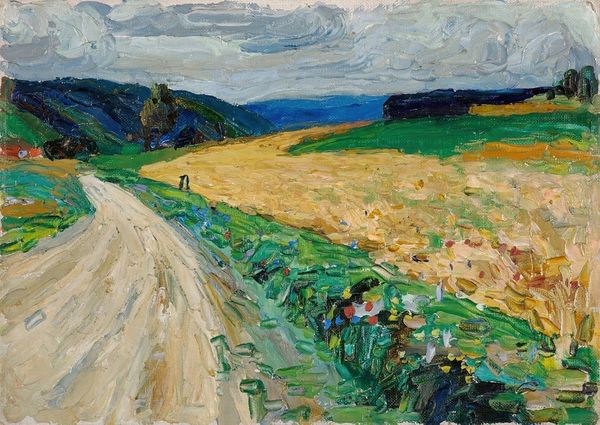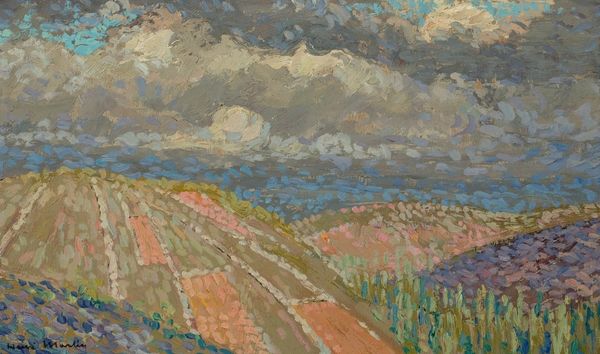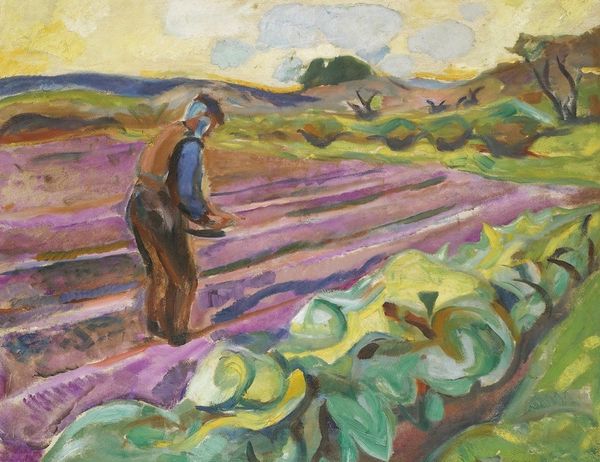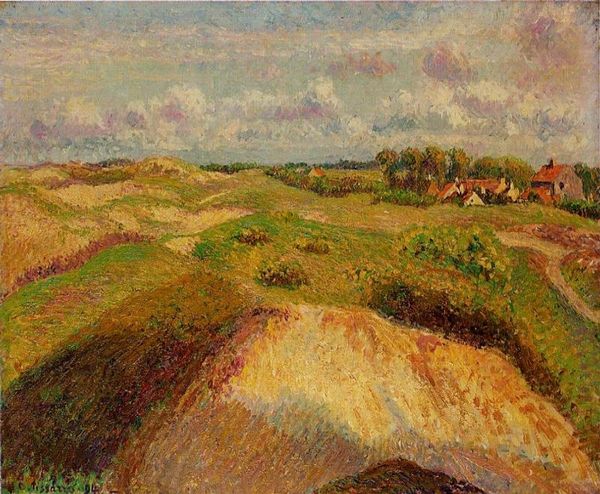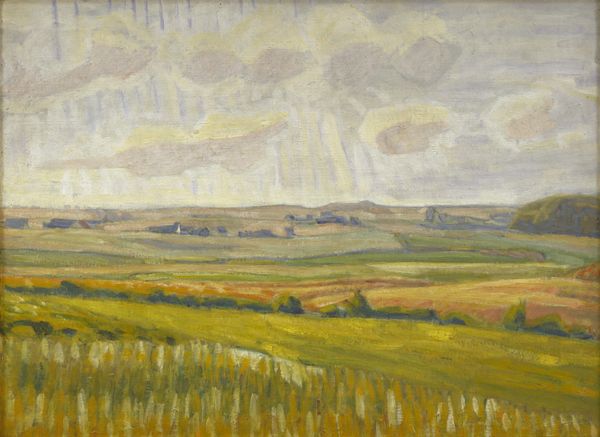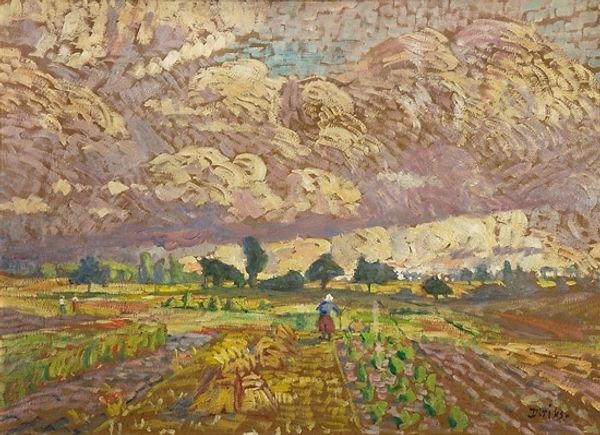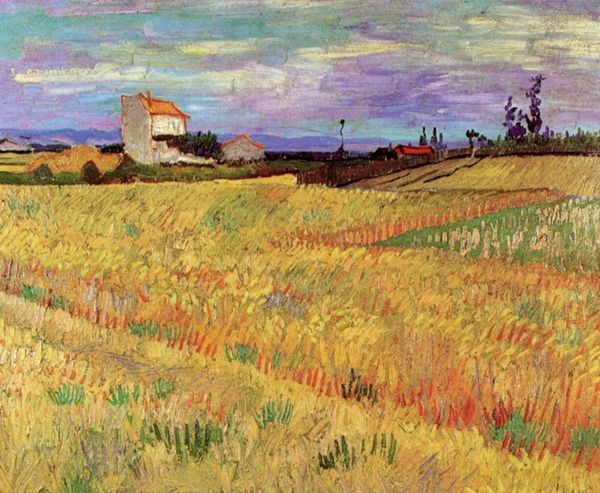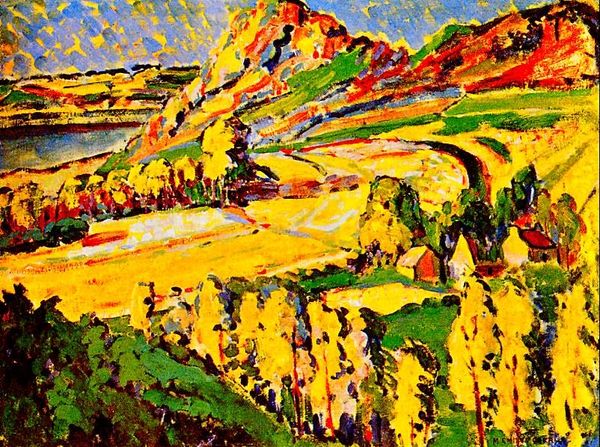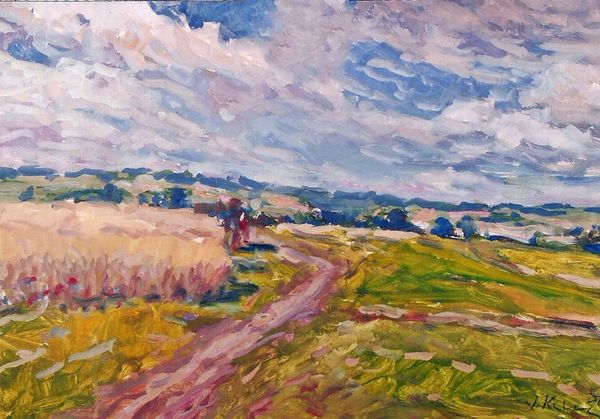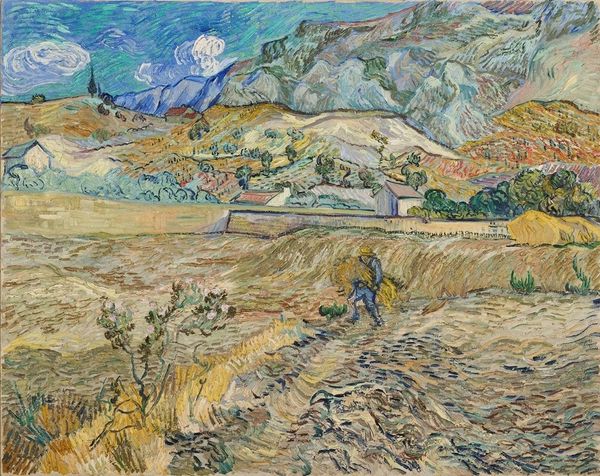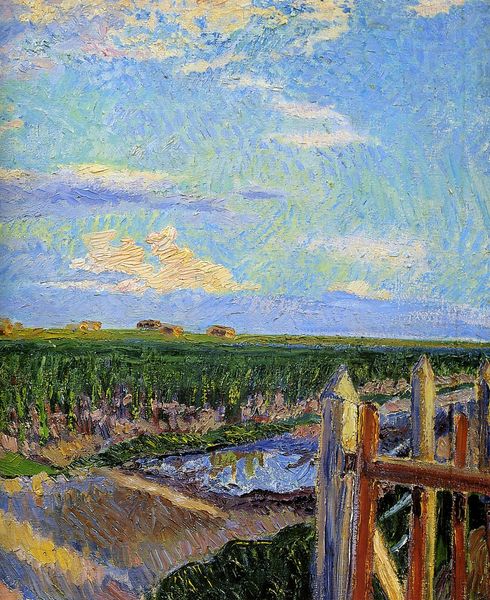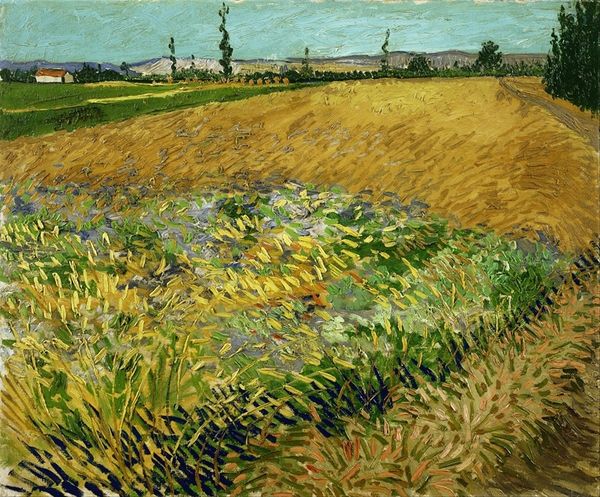
#
abstract expressionism
#
abstract painting
#
impressionist painting style
#
landscape
#
impressionist landscape
#
oil painting
#
fluid art
#
neo expressionist
#
acrylic on canvas
#
seascape
#
expressionist
Copyright: Modern Artists: Artvee
Curator: This striking piece, titled "Kitty" by Timur Akhriev, employs acrylic on canvas to capture a somewhat expressionistic landscape. What strikes you upon viewing it? Editor: Immediately, I sense a tension, almost an antagonism, between the natural and the mechanical. The loose brushstrokes and vibrant palette of the field clash somewhat discordantly with the rather angular bulldozer dominating the foreground. Curator: That’s a valid point. The bulldozer undeniably introduces a socio-economic element to the work, doesn’t it? One cannot help but ponder land use, agricultural industry and how these might intersect with the rural landscape as a signifier of timeless tradition. Editor: Precisely! It disrupts what might otherwise be an idyllic landscape, pulling the viewer into a conversation about progress versus preservation. Though I cannot help but question the intentionality behind the name chosen. How might that influence the reception of the piece? Curator: Semiotically, "Kitty" could be viewed ironically, contrasting the inherent destructiveness of a bulldozer with the innocent, gentle connotation of "kitty," intensifying the discomfort one feels upon recognizing the work's inherent criticism. Alternatively, the bulldozer itself is a composition in contrasts with soft curves in surprising places, almost cat-like. Editor: It is thought-provoking how Akhriev uses the impressionist landscape aesthetic—the broken color and visible brushstrokes—to soften the brutal reality of this industrial incursion, making it almost palatable. How complicit are we intended to be, I wonder? Curator: Perhaps we, the viewers, are being implicated in the narrative of landscape degradation. That said, one might consider how the materiality reinforces the message, as the thick paint and almost aggressive brushwork mirror the aggressive nature of landscape transformation. Editor: Yes, each stroke embodies a distinct moment of intervention. Timur Akhriev's work prompts a broader understanding of environmental and societal shifts, challenging the way we perceive a simple rural tableau. Curator: A critical encounter, I must agree. It provides a great view into understanding art’s capacity to pose compelling, uneasy questions on land use and environmental responsibility.
Comments
No comments
Be the first to comment and join the conversation on the ultimate creative platform.
